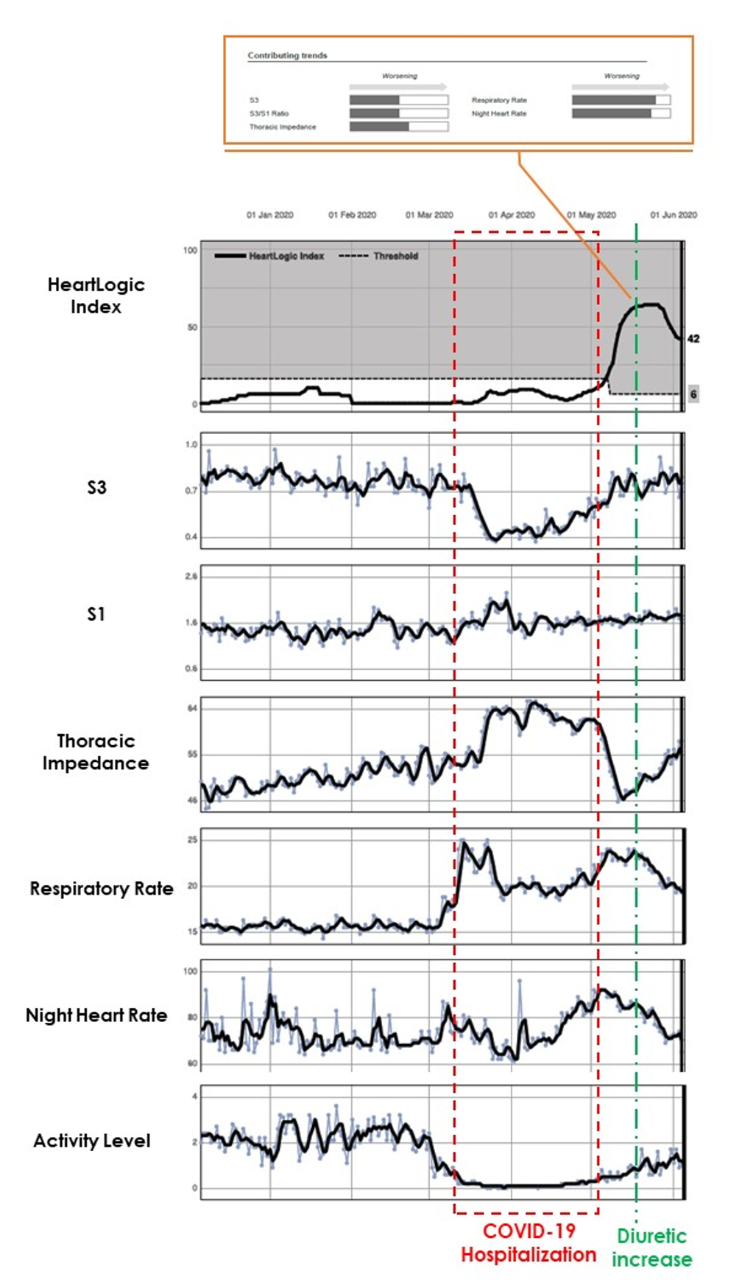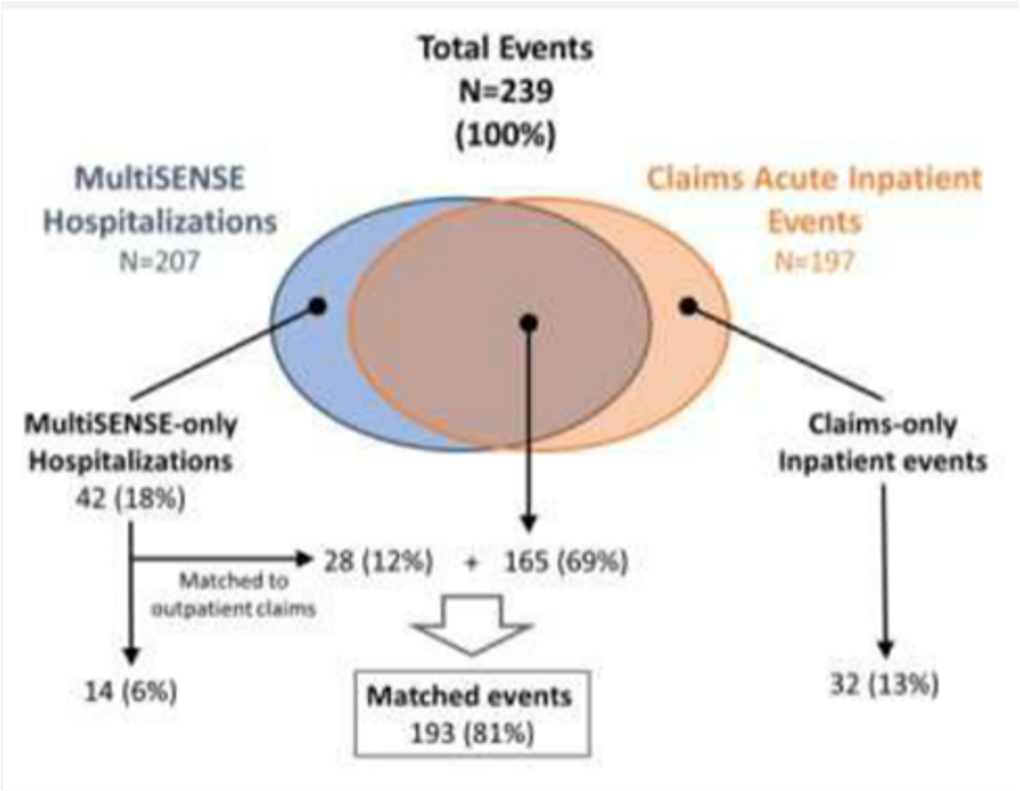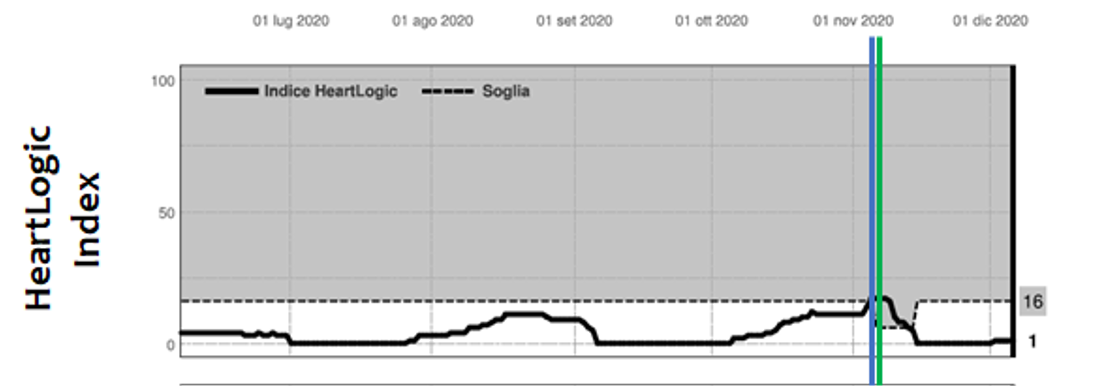Dear HeartLogic™ users,
Welcome to the first 2021 issue of the HeartLogic Newsletter! We hope this year will be wonderful for yourself and your patients.
Let’s start 2021 with some interesting news about HeartLogic that we want to share with you:
- a case report on the performance of HeartLogic in a COVID-19 patient published in the Clinical Case Report Journal
- a new abstract presented at the American Heart Association Congress in November 2020
In this first issue, we are commenting these new clinical evidences and we are sharing a new patient case as well.
HeartLogic and Covid-19 patient:
a case report
Recently a case report from Bontempi et al. (Hospital “Spedali Civili” – Brescia (Italy)) has been published in Clinical Case Report Journal
“Use of a Novel Implantable Cardioverter Defibrillator Multisensor Algorithm for Heart Failure monitoring in a COVID-19 Patient: a Case Report.”
The patient underwent the implantation of a RESONATE™ X4 CRT-D device in September 2018 and was enrolled in LATITUDE™ Remote Monitoring system and the HeartLogic diagnostics was enabled.
On March 10, 2020 the patient was admitted to the hospital with fever and diarrhea and a nasopharyngeal swab confirmed the infection of SARS-CoV-2 virus.
The patient was treated first with drug therapy for COVID-19 and then with high-flow O2 with reservoir: on May 4th he was fine, and physicians decided to discharge him at home.
Few days after discharge an HeartLogic alert was notified to the hospital and, during a phone contact, the patient confirmed dyspnea on exercise and fatigue. The physician found that the diuretic therapy was discontinued during hospitalization and suggested to restore it.
Few weeks after, the HeartLogic index decreased below the recovery threshold and the patient reported an improvement in heart failure condition.
The HeartLogic Report reported in the Figure 1 shows that:
- At the time of COVID-19 hospitalization: a marked increase in respiratory rate and decrease in patient activity trends were observed due to worsening in respiratory function and the hospital stay, but no changes were noticed in the HeartLogic index
- During COVID-19 hospital stay: the restoration of respiratory function was associated with a decrease in respiratory rate, and the general improvement in patient clinical status was confirmed by the reduction in S3 heart sound amplitude and the increase in thoracic impedance
- After hospital discharge: sudden worsening in heart failure status was confirmed by sharp increase in combined HeartLogic index and consequent remote alert was triggered. The alert was led by a progressive increase in the amplitude of S3, in the night heart rate and in respiratory rate, in addition to a marked drop in thoracic impedance.
Interestingly, the author stated, at the time of the COVID-19-related respiratory episode, the composite index remained below the alert threshold and did not trigger any alert, even if the increase in respiratory rate and decrease in activity level have been correctly identified. Indeed, the HeartLogic algorithm was developed to diagnose HF events, and, as expected, the index increases only when multiple contributing trends suggest a worsening cardiac condition.
American Heart Association Congress 2020
In November 2020, the American Heart Association Congress took place as Virtual Experience.
An original abstract from Boston Scientific RM department and the MultiSENSE Study board has been presented: “Evaluation of Medicare Claims for Heart Failure Diagnostic Development: A MultiSENSE-Linkage Feasability Analysis” (Wariar et al.).
In the MultiSENSE trial, HF events were adjudicated by a Clinical Events Committee (CEC), but this method for capturing and adjudicate clinical events is manually intensive and expensive.In this abstract, the authors linked data from the MultiSENSE study with Medicare claims data in order to validate adjudicated HF events and compare HeartLogic performance.
The linked cohort was older than the remaining patients and had greater disease burden (Ischemic Cardiomyopathy, atrial fibrillation, peripheral vascular disease , higher NT-proBNP ).
Study deaths exactly matched with claims, while a match was found in 81% of study hospitalizations (193 MultiSENSE events matched with inpatient and outpatient claims). 32 (13%) were claims-unique, and 14 (6%) were study-unique.
The HeartLogic algorithm detected claims-derived events with a sensitivity of 75.6% and a false positive rate (FPR) of 1.539 alerts/pt-year, which was not different from performance derived using study events (sensitivity = 77.6% and FPR = 1.528, P = 0.82 and 0.92).
The primary objective of this study was to evaluate the feasibility of using claims-derived HF events for implanted device diagnostic development:
- Although matching of study hospitalizations to claims was incomplete, we found substantial agreement between claims-based HF classification and study adjudication
- HeartLogic diagnostic performance using claims-derived HF events was not different from that using study CEC adjudicated events
- HeartLogic detected events contributed of a significant proportion of HF event costs used for performance evaluation (91%)
Case of the month
A 71 years-old man underwent implantation of VIGILANT™ X4 CRT-D in October 2019. The patient was enrolled in LATITUDE™ Remote Monitoring system and the HeartLogic™ feature has been activated.
The patient was fine till November 5th (blue line) when an HeartLogic alert….



















